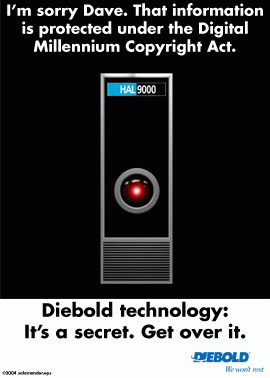These called for centralized registration databases in all the states. This expanded the opportunity to efficiently purge legitimate voters from Florida to all the states.
HAVA provided another opportunity to deny votes. It supported voter identification laws. These laws attempt to solve the patently fake problem of voter fraud (unregistered individual voters, poor & minority, lined up to vote). Average convictions and guilty pleas averaged six a year, hardly a crime wave, not even close to a justification.
So much for solving the real problems of Florida 2000.
Hidden Costs Emerge Quickly
There are some very unhappy customers in counties all across the country. It seems electronic voting is not free forever, just at the start. Once you’re hooked, there are all sorts of additional costs. A study by Suffolk County, New York summarized the problem:
"There exists a myriad of additional components which would need to be considered when addressing the cost of adopting an electronic voting system, including but not limited to software products, service rates, optional accessories (such as a voter-verified paper audit trail), training fees, ...audio preparation fees, cartage, storage, maintenance, technical support, and voter education."
Salt Lake City, for example, found out that election costs have soared under the helping hand of HAVA.
The Salt Lake City Council is ready to bite the bullet and pay three times more for its municipal election than it has in previous years. The extra costs are mainly because the new electronic voting machines require more training for poll workers at higher wages. The machines are also in short-supply, which could mean fewer polling locations… KCPW News 11 July 2007
What a bargain! You pay more and you get fewer precincts. Good thing there’s no competition in the voting business. The government would be finished.
Riverside Count, California one of the first locales to adopt touch screen electronic voting saw its elections budget soar. There were performance and security questions as recently as the 2006 elections. The San Diego Union reported on July 17 that “According to the (blue ribbon) committee's report, the county should phase out electronic voting in favor of ‘a hybrid voting system whereby able-bodied voters mark their preferences on paper ballots which are then counted by optical scanners.’”
So billions of dollars later, botched election after election, and the loss of confidence in the entire system, what do we have?
Diebold Variations © (with permission)
The Real Costs of Helping America Vote
Computerized voting is secret. Your county election official can’t look inside the machine or examine the basic computer code. That’s in their contract with Diebold, ESS, etc. Even if they could, most would lack the expertise to understand and judge operations and security features.
.
Verifying votes is either impossible or faith based. The touch screen systems fail to produce a real audit trail. When they do, all you get is a paper receipt. This may or may not reflect the way the touch screen counted your vote. Optical scanners, which count voter marked paper forms, are computerized tabulators. These have digital memory records of votes ( the real ballots by law). We don’t get access to that. It’s private, manufacturers only. We’re told, “Move along.”
But the real cost of computerized voting is to the process formerly known as democracy. Since we don’t know how the machines truly operate and there are no real ballots to recount, there’s no way elected officials can actually demonstrate that they were elected. There have been many questionable elections since 2000. The quick response by the winner has been sore loser or spoiled sport. That’s not only a dishonest response; it’s had its day with the public. Americans have very negative attitudes toward electronic voting.
(Note: You can view every article as one long page if you sign up as an Advocate Member, or higher).






